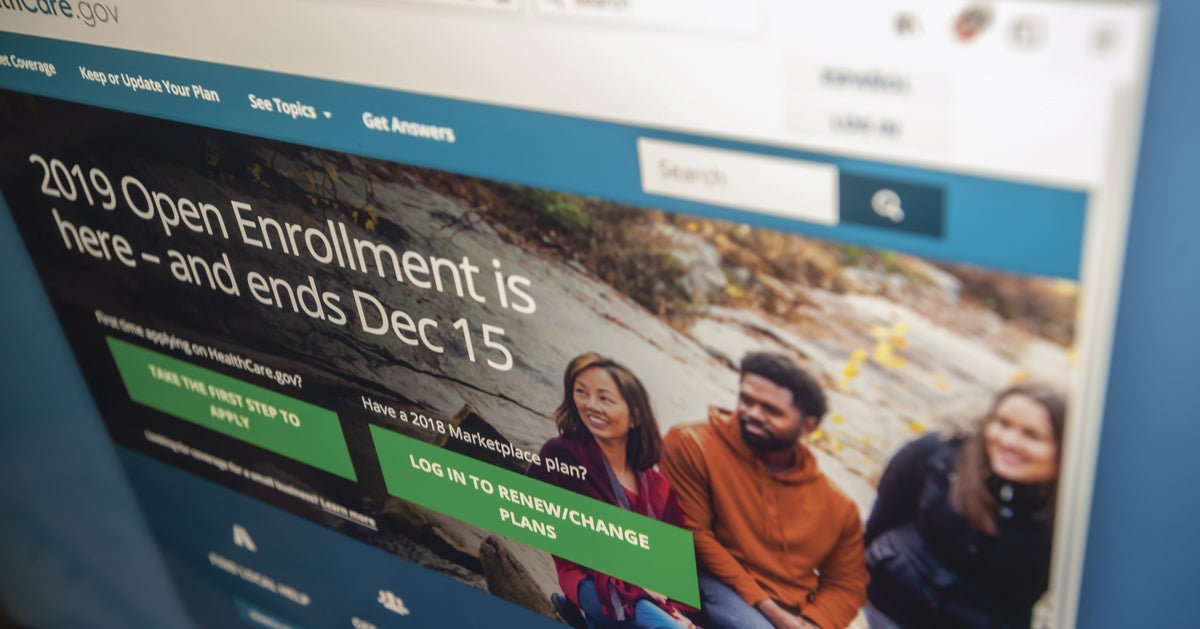A new health reform proposal aims to replace Obamacare’s Medicaid expansion and nationwide entitlements with formula grants that states would use to provide better insurance options for high-risk and low-income patients. It’s called the Health Care Choices Proposal. Released in June, it was put together by the Health Policy Consensus Group, a group of more than 100 health policy experts from a broad array of think tanks, including state-based policy groups, physicians, and leaders of grassroots and other organizations from across the country. Grace-Marie Turner of the Galen Institute has been facilitating the group’s work in conjunction with Marie Fishpaw of The Heritage Foundation. We talked with Turner about what the Health Care Choices Proposal will to do to reform health insurance markets.
The Insider: What went wrong with Obamacare that the Health Care Choices Proposal aims to fix?
Grace-Marie Turner: The list of problems with Obamacare is so long we actually wrote a book about it (Why Obamacare Is Wrong For America, Harper Collins). To start with, former President Obama made too many unachievable promises: He said health insurance premiums would be cut by $2,500 for families; that people could keep their doctors; that if people liked their health plans, they could keep their health plans. Supporters also said we’d finally get to universal coverage. But after Obamacare, 28 million people still are uninsured. And costs have gone up while choices have gone down. People lost their doctors and the policies they had—policies they liked—because of Obamacare. Millions of people now can’t afford the insurance available in the individual and small group markets. The law’s many rules about what health insurance must cover and who must pay have caused premium costs to more than double. And this is forcing millions of people to drop their policies. We have to fix this for them.
The federal government cannot possibly take into account the differences between the insurance markets in Maine and Mississippi and Montana. Individuals have different needs and preferences, and states have different challenges and resources.
TI: Why did that happen? What’s the flaw in Obamacare?
GT: Obamacare’s hubris is the root of its problems. The law’s proponents believe that the federal government has the keys to solving problems in our health sector. But the federal government cannot possibly take into account the differences between the insurance markets in Maine and Mississippi and Montana. Individuals have different needs and preferences, and states have different challenges and resources. But Obamacare created cookie-cutter policies and told everyone they had to buy them—or face penalties. It’s like telling people they have to buy a Rolls Royce or they can’t have a car. We need to give people more options—options of policies with more flexible benefits and with premiums they can afford. One of the worst things Obamacare did was force young people to pay higher premiums so older people can pay less. The law’s drafters thought that by mandating that everyone buy health insurance or pay a fine, they would force healthy people into the market. Well it didn’t work, and now we have risk pools that are very unstable. The Obamacare insurance markets are older and sicker, and healthy people are being driven out by high premiums and sky-high deductibles.
TI: What has the Trump administration done so far about these problems?
GT: The Trump administration has done as much as it can with the tools it has to soften the impact of Obamacare. For example, it just released new regulations for short-term limited-duration health plans. These plans give people the option of buying more affordable health insurance that doesn’t have to follow all of the rules and regulations of Obamacare. Originally, these plans had a duration of one year. The idea was to provide bridge coverage for people who were between jobs, starting a new job or company, or retiring early. The Obama administration basically shut these plans down by limiting them to three months, but the Trump administration has revived them. It is allowing people to purchase short-term coverage for a year and to renew the plans for up to three years. This gives people what we call the “freedom option” for health insurance that is more flexible and more affordable. These plans often cost 70 percent less and offer a broader choice of health-care providers, and they can provide protection for people with pre-existing conditions.
The administration also recognizes that people in the individual and small group markets need to be able to get the economies of scale that big companies have, so it has created a pathway for people to purchase insurance through Association Health Plans. Republicans have been talking about this idea for a long time. Sen. Mike Enzi (R-Wyo.) championed legislation to create AHPs for many years in the Senate. Now they are a reality because of new rules written by the Trump administration. If you are a building contractor with three or four employees, or if you’re a plumber, then you can buy a health plan through a trade or business association to get a better deal. Association plans help spread the risk of a high-cost employee more broadly and thereby can lower premium costs.
 Richard B. Levine/Newscom
Richard B. Levine/Newscom
TI: Is that trying to replicate somewhat what happens on the employer’s side of the market?
GT: Yes, it’s trying to replicate to some extent the economies of scale and flexibility in the large employer market. AHPs also allow for national plans. If you have a company that has operations in several states, you don’t have to follow different insurance regulations in the several states where you have operations. This helps make buying insurance simpler and hopefully less expensive.
TI: The Trump administration has also provided waivers to the Obamacare insurance market requirements for a number of states, right?
GT: Yes. The Heritage Foundation just published a paper on these waivers, written by scholars Doug Badger and Ed Haislmaier. Their paper [“State Innovation: The Key to Affordable Health Care Coverage Choices”] looks at the experiences of several states that received waivers to help them address one of the core problems of Obamacare. Obamacare put the sickest people in the same pool with healthy people and charged healthy people more to cover their extra costs. That has driven up premiums so much that healthier people are dropping their policies, and then premiums go up even more for the people who remain.
Seven states so far have received waivers to use some of the existing Obamacare funds to supplement premiums for high-risk individuals so they can take the pressure off the rest of the market. They estimate they will be able to reduce premium prices in their individual and small group markets for 2019 by between 7 percent and 30 percent by using various risk-mitigation strategies, such as creating high-risk pools. And because premiums are lower, more people can afford coverage. In Minnesota, for example, enrollment increased by 13 percent. So this is one way the administration is trying to help states by giving them more flexibility. And it shows why states should lead the way in helping their insurance markets heal from the damage that Obamacare has done.
 BigNazik/getty images
BigNazik/getty images
TI: And what does the Health Care Choices Proposal do to build on those steps by the administration?
GT: The Health Care Choices Proposal is a policy proposal developed by the Health Policy Consensus Group, which is a loose affiliation of about 100 health policy experts and others with an interest and expertise in health policy. The group has been meeting at The Heritage Foundation almost every week for a year to develop a plan to fix the problems created by Obamacare. The plan represents a new generation of health policy. The core idea is to take power and control away from Washington, which has proven it’s incompetent in managing local health insurance markets for the entire country. Instead the Consensus Group’s plan directs existing resources and greater flexibility to the states so they can develop their own plans to give people more choice and lower prices in health insurance.
TI: Do you have any sense of what the states will do with the more flexible grants the plan would give them?
If the states receive a fixed amount of money through formula grants, then they’re going to have to be more responsible in making sure that those dollars cover as many people as possible.
GT: The money that’s currently going to Obamacare is entitlement-based. The law basically says if you fit into certain eligibility categories, then you’re going to have your health insurance subsidized, no matter how high the premiums go. Under that setup, there is very little incentive to spend taxpayer dollars wisely. And it’s not a financially sustainable system.
First, it’s not working for millions of people who still can’t afford coverage and who are not subsidized. It’s not working for people whose deductibles are so high—sometimes as much as $12,000 a year for a family—that they might as well not have insurance. And it is not working for people on Obamacare plans who have little or no choice of insurance plans and very limited networks of doctors and hospitals.
We propose re-allocating Obamacare funding to the states through formula block grants that would take into account past spending and the number of low-income people in the state. States would be freed from many of the Obamacare regulations that have damaged their small group and individual markets, and they could use the grants to focus assistance on those who really need help. They also would be able to encourage insurers to offer policies that people may actually want to buy instead of being forced into rigid Obamacare policies.
Our Consensus Group offered a few broad guidelines on how states may use the funds. Readers who are interested can view the plan details at HealthCareReform2018.org. States would need to use the money to make sure lower income people are getting coverage and, if they are assigned to Medicaid, to allow them to opt out into a private plan of their choosing. The idea is to move money through the states to individuals to give them more power and control so that they are given a greater choice of plans that they prefer. Our proposal would require that a specific percentage of the state’s grant—and Congress will ultimately determine what that percentage is—must be used to subsidize people with high risks. That’s something that Obamacare didn’t do.
As Badger and Haislmaier showed in the paper I described earlier, this is an effective way to get premium costs under control. Our plan actually does a better job than Obamacare of providing for people who are sick. We think, based on the experience of states that have had waivers, that if you allow states to subsidize those with high risks and high costs separately, you’re going to be able to lower premiums for everyone else. That will attract more people into the insurance markets.
TI: How does the switch from the matching-grant set up in Medicaid to a formula grant change the incentives that states face?
GT: States will have new incentives to make sure taxpayer dollars are spent wisely. If the states receive a fixed amount of money through formula grants, then they’re going to have to be more responsible in making sure that those dollars go as far as possible to cover as many people as possible. And they will have new incentives to work with insurers to make sure citizens have access to quality insurance. Formula block grants would give states incentives to make the best use of federal dollars rather than devising schemes to draw down more and more federal money. Oh, and they wouldn’t be able to spend the block grant money on roads and bridges. It would have to go toward providing health coverage, focusing especially on high-risk and lower-income people.
TI: One thing the Consensus Group’s plan does is allow insurers the option of offering discounts for continuous coverage. Could you explain why insurers can’t do that now?
GT: Obamacare has allowed people to wait until they are sick to buy health insurance. That is like allowing people to wait until their house is on fire to buy home insurance. That completely nullifies the whole concept of insurance. Insurance can’t work if people aren’t pooling risks by paying premiums over time. But in order to have a properly functioning market, health insurance premiums have to be affordable, and the policies need to be appealing so people see insurance as valuable and want to buy it. One way to encourage people to enter and stay in the market is to give them a discount if they stay continuously covered. Our plan would allow insurers to do that. We also believe they should be able to give a discount to young people who buy insurance. We believe in incentives, not mandates, fines, and penalties.
 lbodvar/getty images
lbodvar/getty images
TI: Is the plan designed to have a budgetary impact? Is it going to save money, cost money, or be budget-neutral?
GT: Our plan is budget-neutral. It simply redirects existing Obamacare resources to states, but over time we believe it will save taxpayers money. We already have seen these kinds of reforms save money. In the 1990s, for example, Congress changed welfare from an entitlement to a formula grant. And the states figured out how to use those resources more efficiently. Without access to an open-ended entitlement, the states will be better managers of those resources. We believe the market will provide people with more options, including those outside traditional insurance—such as direct primary care. Direct primary care allows people to pay a primary care physician a monthly fee for routine care and then buy a less expensive catastrophic policy that covers major medical needs. There could be so many more options for coverage than we see now, but that’s only going to happen if we give states and the private marketplace the flexibility to innovate.
In order to have a functioning health insurance market, premiums have to be affordable and the policies need to be appealing so people see insurance as valuable and want to buy it.
TI: Does the plan reform anything on the employer side of the market?
GT: Our plan doesn’t address the market for employer-sponsored health insurance. Ours is a relatively narrow plan focusing just on the individual and small group markets and people in the Medicaid expansion population. One of the many overreaches of Obamacare was that it tried to do so much in one bill that it was very disruptive and dislocating. The American people don’t have an appetite for that to happen again. So we offered a narrower approach, but one that can be transformative. This is a new generation of health reform that respects our Constitution, respects state’s rights, and that ultimately is designed to help states give millions of people more choices of coverage they can afford.
TI: Would you care to talk about what reforms you’d like to see beyond this plan?
GT: We already are working on reforms beyond the recommendations we made in our Health Care Choices Proposal. We will continue to look for ways we can be helpful in offering ideas to help vulnerable populations and to create a platform for an affordable, functional, and vibrant market for health care and health coverage. Stay tuned!
